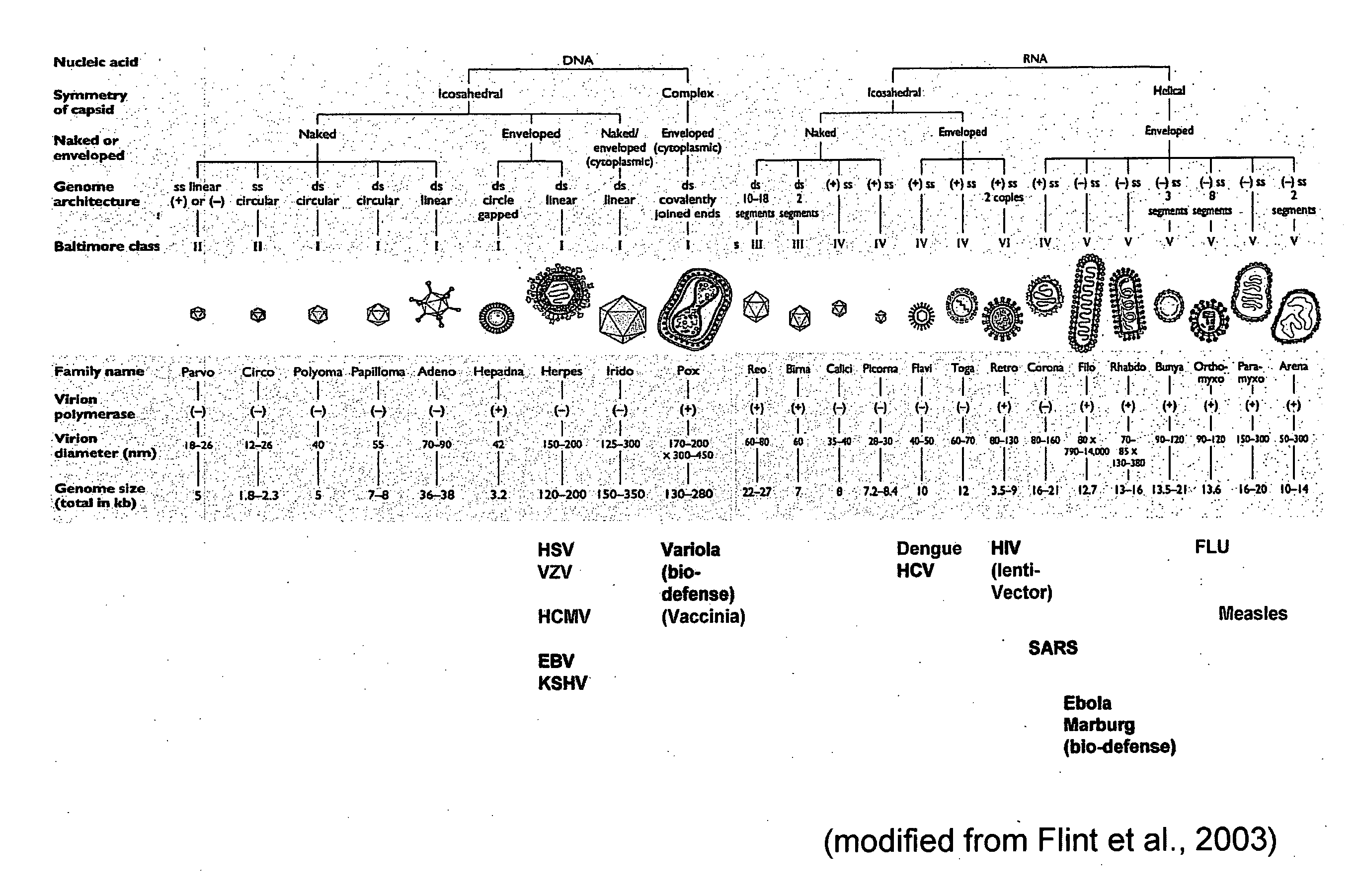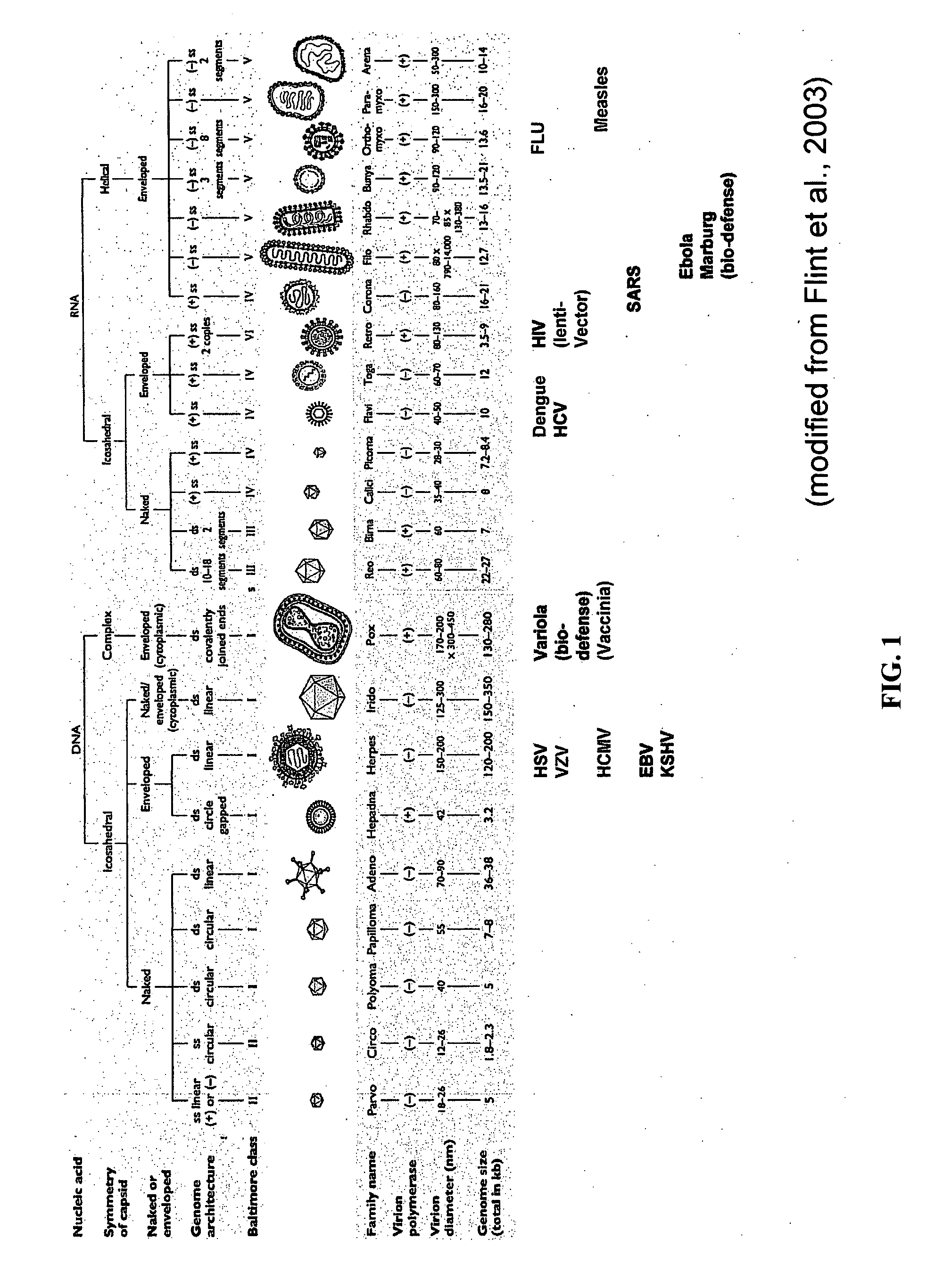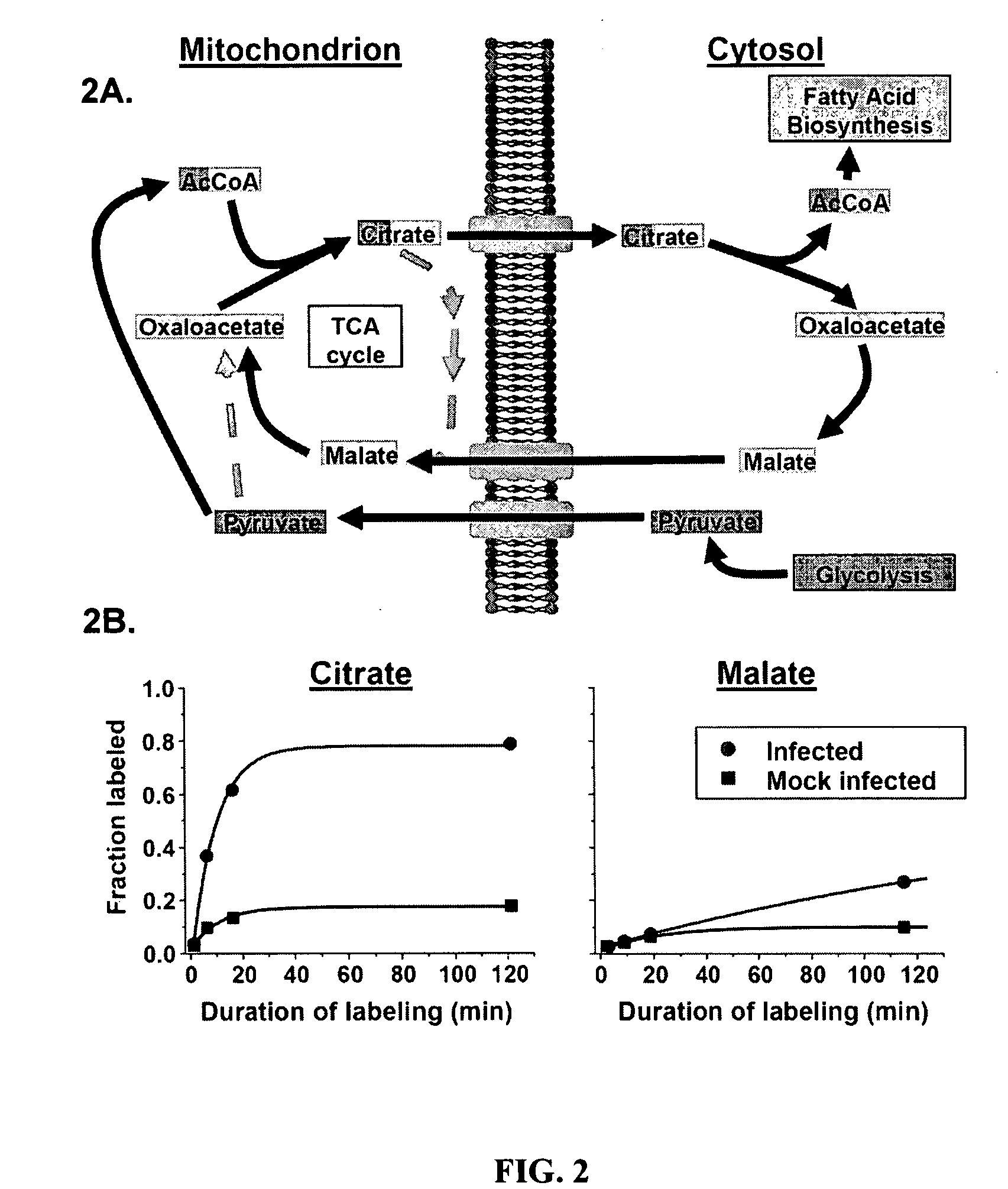Treatment of viral infections by modulation of host cell metabolic pathways
a technology of host cell metabolic pathway and viral infection, which is applied in the direction of biocide, drug composition, phosphorous compound active ingredients, etc., can solve the problems of insufficient technology for evaluating the effect of viral infection on host metabolism, and achieve the effects of reducing or improving severity, reducing the duration of viral infection, and reducing the titer of virus
- Summary
- Abstract
- Description
- Claims
- Application Information
AI Technical Summary
Benefits of technology
Problems solved by technology
Method used
Image
Examples
example 1
6.1 Example 1
Approach to Identifying Metabolic Fluxes Upregulated by Viral Infection
[1009]Viral replication requires energy and macromolecular precursors derived from the metabolic network of the host cell. Until recently however, adequate technology for evaluating the effect of viral infection on host metabolism was not available.
[1010]Viruses can alter cellular metabolic activity through a variety of routes. These include affecting transcription, translation, and / or degradation of mRNAs and / or proteins, relocalization of mRNAs and / or proteins, covalent modification of proteins, and allosteric regulation of enzymes or other proteins; and alterations to the composition of protein-containing complexes that modify their activity. The net result of all of these changes is modulation of metabolic fluxes to meet the needs of the virus. Thus, metabolic flux changes represent the ultimate endpoint of the virus' efforts to modulate host cell metabolism. Accordingly, fluxes that are increase...
example 2
6.2 Example 2
Upregulation of Glycerol-3-Phosphate Dehydrogenase, Citrate Transport Protein, and Citrate Lyase Flux by Human Cytomegalovirus
[1022]The kinetic flux profiling (KFP) approach described herein was used to examine changes in carbon metabolic fluxes induced by human cytomegalovirus (CMV) infection of primary human foreskin fibroblasts. Uniformly 13C-labeled glucose was used as the isotopic tracer. For the following glycolytic and glycolysis-associated metabolites, concentrations were substantially increased at 48 hours post infection (hpi) (compared to uninfected, quiescent fibroblasts) and rates of isotope labeling were either unchanged or increased: hexose phosphate (a combined signal from metabolites including glucose-6-phosphate, glucose-1-phosphate, and fructose-6-phosphate), fructose bisphosphate, glyeraldehyde-3-phosphate, phosphoenolpyruvate, and acetyl-coenzyme A. The combination of increased concentrations and unchanged or increased turnover rates implied increase...
example 3
6.3 Example 3
Upregulation of Glutaminase and Glutamate Dehydrogenase Flux by Human Cytomegalovirus
[1032]In this example, uniformly 13C-labeled glutamine was used as the isotopic tracer. Labeling kinetics of the amino acid glutamate, as well as TCA cycle components ketoglutarate, succinate, fumarate, and malate were observed in fibroblasts at 48 hours post CMV infection versus uninfected, quiescent fibroblasts. Concentrations of the metabolites were increased and the rates of isotope labeling also increased in the CMV-infected samples. The formation of labeled glutamate (and downstream TCA cycle compounds such as ketoglutarate, succinate, fumarate, and malate) from labeled glutamine involves flux through the enzyme glutaminase. Accordingly, the KFP data demonstrated increased glutaminase flux. The glutamate must then be converted to ketoglutarate by glutamate dehydrogenase. Accordingly, the KFP data demonstrated increased glutamate dehydrogenase flux. There are two forms of glutamate...
PUM
 Login to View More
Login to View More Abstract
Description
Claims
Application Information
 Login to View More
Login to View More - R&D
- Intellectual Property
- Life Sciences
- Materials
- Tech Scout
- Unparalleled Data Quality
- Higher Quality Content
- 60% Fewer Hallucinations
Browse by: Latest US Patents, China's latest patents, Technical Efficacy Thesaurus, Application Domain, Technology Topic, Popular Technical Reports.
© 2025 PatSnap. All rights reserved.Legal|Privacy policy|Modern Slavery Act Transparency Statement|Sitemap|About US| Contact US: help@patsnap.com



